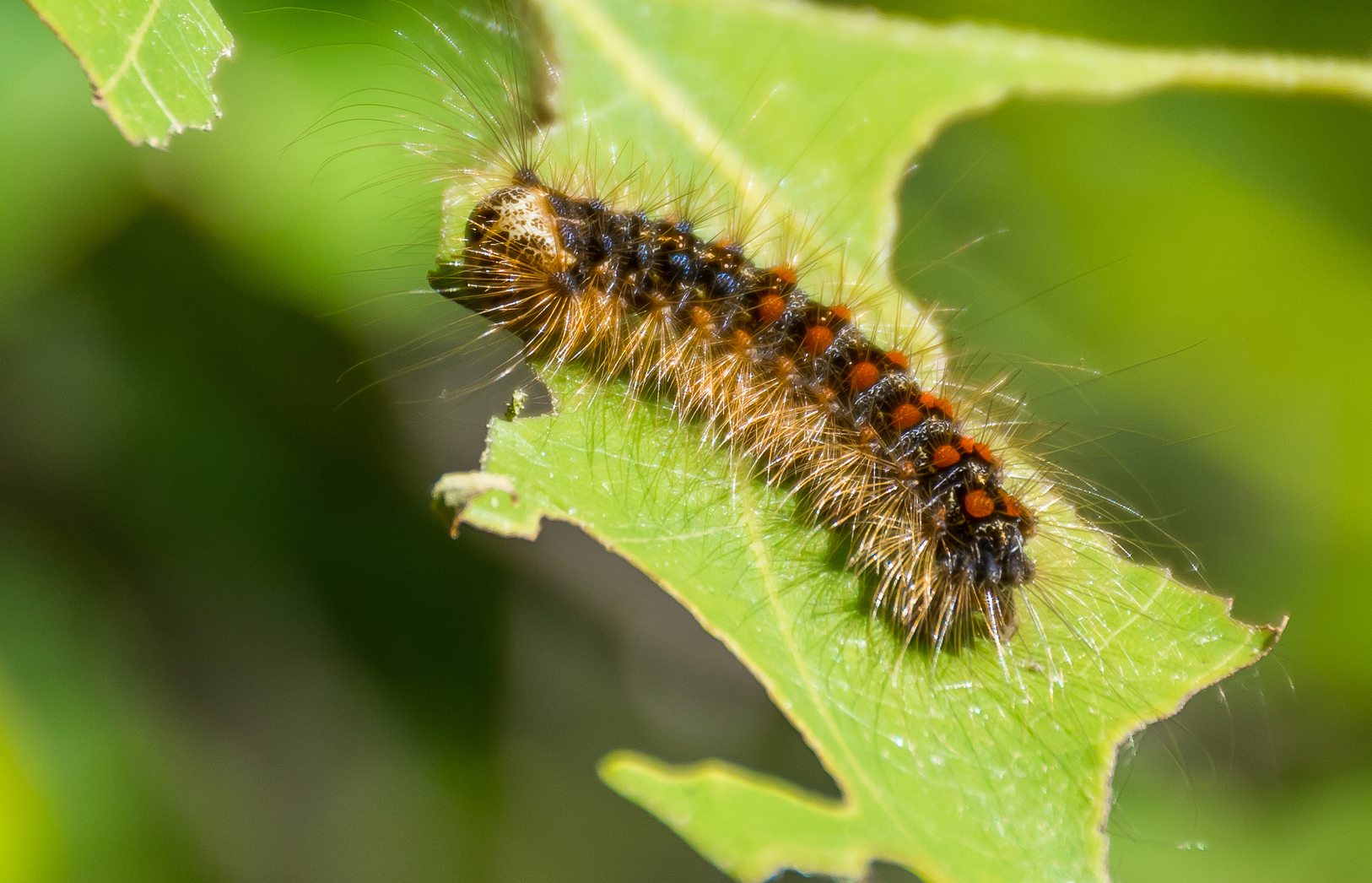Translation of French name based on destructive forest pest's sponge-like egg masses
Annapolis, MD; January 25, 2022—A group of entomologists and forestry professionals convened by the Entomological Society of America has recommended "spongy moth" as the new common name for the moth species Lymantria dispar.
The name—derived from the common name used in France and French-speaking Canada, "spongieuse"—refers to the moth's sponge-like egg masses. It would replace "gypsy moth" as the approved common name in ESA's Common Names of Insects and Related Organisms List, from which the name was removed in July 2021 for its use of a derogatory term for the Romani people.
Proposals for the ESA Common Names List are opened for member comment prior to final approval by the ESA Common Names Committee and ESA Governing Board. ESA members may comment on the proposed name now through February 8.
Lymantria dispar is an invasive pest of North American forests that can defoliate hundreds of tree and shrub species. Native to Europe, Asia, and North Africa, it was introduced in Massachusetts in the 1800s and is now widespread in the northeastern United States and eastern Canada and costs hundreds of millions of dollars each year in damage and prevention and control efforts.
A primary way the moth spreads is via egg masses transported on firewood, outdoor equipment, and vehicles. Public awareness of the L. dispar egg mass, which has a sponge-like texture and appearance, is important in controlling the pest, as the insect spends most of its life cycle (10 months) in the egg stage.
The name "spongy moth" was selected by a working group formed through ESA's Better Common Names Project. The group includes more than 50 scientists and professionals who work in research or forest management settings in both the United States and Canada, as well as Romani scholars working on human rights issues. The group gathered name suggestions and additional input from a broad array of interested individuals and organizations, including entomologists, forestry professionals, federal agencies, state departments of agriculture and natural resources, conservation groups, pest control and plant protection organizations, and Romani people. More than 200 name proposals were evaluated, and a list of seven finalist names was shared with these groups for consideration, with more than 1,000 responses received.
If formally approved by ESA's Common Names Committee and the ESA Governing Board, "spongy moth" would be adopted for use in articles published in ESA's scientific journals and in presentations and posters at ESA conferences, as well as in ESA's website, social media, and public policy documents.
ESA will encourage other organizations and individuals who work in research or management of Lymantria dispar to transition to use of the new common name in communications, documents, and publications as time and resources allow in coming months and years. The Better Common Names Project will publish an implementation guide for adopting the new name, with recommendations and frequently asked questions, once approved. (Sign up for updates to be notified when this guide is available.)
Lymantria dispar larva
###
CONTACT: Joe Rominiecki, jrominiecki@entsoc.org, 301-731-4535 x3009
ABOUT: ESA is the largest organization in the world serving the professional and scientific needs of entomologists and people in related disciplines. Founded in 1889, ESA today has more than 7,000 members affiliated with educational institutions, health agencies, private industry, and government. Headquartered in Annapolis, Maryland, the Society stands ready as a non-partisan scientific and educational resource for all insect-related topics. For more information, visit www.entsoc.org.
IMAGES:
- Lymantria dispar adult by Gyorgy Csoka, Hungary Forest Research Institute, Bugwood.org
- Lymantria dispar egg masses and larva by Karla Salp, Washington State Department of Agriculture, Bugwood.org



